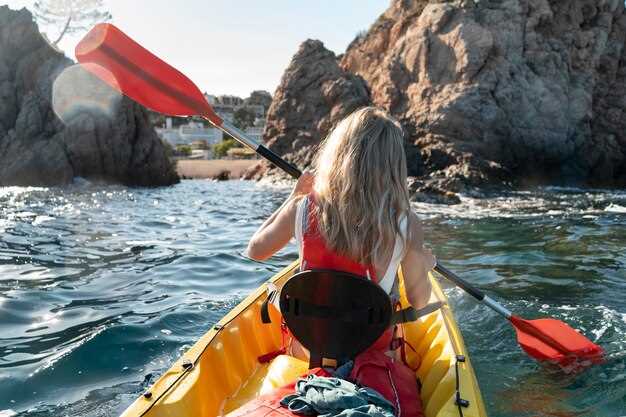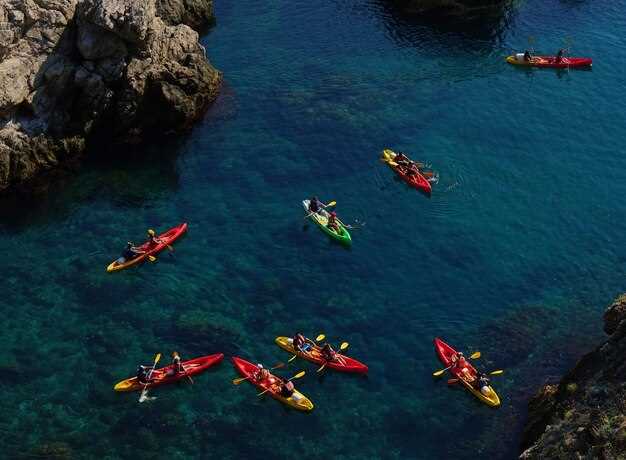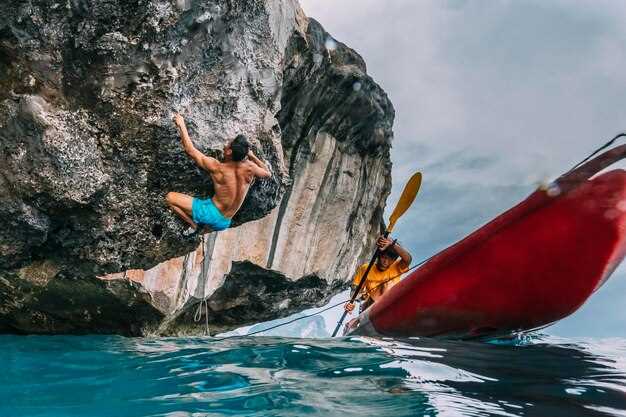
Book a guided, online sea kayak tour and you’ll be ready for a safe, breathtaking adventure along Tenerife’s coast. A local guide provides a guarantee of safety, then leads every small group, delivering a clear safety brief and smooth paddling through calm coves and open water.
Choose a departure from Costa Adeje, Los Cristianos, or Puerto de la Cruz, where certified guides provide equipment, safety briefings, and a relaxed rhythm for both beginners and seasoned paddlers. Tours typically run 2–3 hours and include kayak, paddle, spray deck, and a dry bag for valuables. Departures usually begin at 09:00 and 14:00, giving you morning light or post-lunch shade for the coast views. This isnt a generic tour; your guide adapts to the group.
During the paddle you’ll glide along lava-formed coastlines, spot sea caves and arches, and hear about the local geology from your guide. You’ll travel through turquoise water, stopping at a photo-friendly spot for a quick break and a chance to listen to seabird calls.
Costs vary by duration and operator, typically €40–€85 per person. Online booking often secures the best availability and a flexible cancellation process. Members of clubs or groups may receive a small discount, and some operators offer combo options with a coastal cruise. costs can vary by season and demand.
What to bring: sunscreen, water, a hat, swimsuit, and a change of clothes. Wear a light layer in cooler months; a waterproof bag keeps valuables safe. The session is a blend of light exertion with rest stops, making it suitable for sports enthusiasts. To avoid hurt, stay within your guide’s pace and follow all safety instructions.
Spring and autumn offer milder seas for easy paddling, while summer shines for long daylight hours along the coast. In the middle of the Atlantic, Tenerife’s sea presents a steady rhythm on protected routes that let you enjoy the scenery without feeling rushed. Your guide will point out each spot and explain the coastal ecosystem as you go.
Each trip is designed so groups can share the spot and keep the process simple: your guide handles navigation, safety checks, and coordination, while you focus on the scenery and the moment. once you’re back on shore, you’ll know what you liked most and what you’d book again for another adventure.
Best Sea Kayak Routes Along Tenerife’s Coasts
Start with the Los Gigantes Cliffs Paddle as your first route: a 6–8 km round trip along the dramatic west coast, best in calm mornings, where kayakers can spot dolphins and possible sightings of pilot whales. This full experience introduces exploring along the coast, the light on the basalt walls, and being back at the launch point is easy for families and first-timers. This route must be on your list.
Los Gigantes Cliffs Circuit follows a line of basalt cliffs that plunge into turquoise water, with sheltered bays ideal for snorkelling and small sea caves near the base. Expect 2.5–3 hours on the water; choose a window of calm mornings; keep an eye on waves, especially if winds pick up. Launch from Los Gigantes Marina; the route suits kayakers of all levels, though families should stay close to the shore and keep to shallow sections. That choice makes it practical for both beginners and those seeking a rewarding last mile along the coast.
South Coast Segment runs from Costa Adeje toward La Caleta along a mostly protected shoreline. The 4–6 km loop is perfect for a half-day, with practical stops for snorkelling in reef patches and quick rests on sunny beaches. Look for sea caves near coves and arches; you may see stingrays or small fish along the rocky ledges, making it easy to spot wildlife while exploring. Plan for 2–3 hours and wear a wetsuit in cooler months; consider starting close to sunrise to enjoy better light for photos and to beat boat traffic.
North/East Coast Route along the Anaga coast from Benijo to Almáciga offers dramatic cliffs, clear water, and a more challenging paddle. The 5–7 km circuit demands good balance and wind awareness, typically 2.5–3.5 hours. The rugged scenery makes it a favorite for explorers who want places along the coast that feel remote; you can also extend to San Andrés if conditions permit. For safety, the process is smoother with a local guide who provides a safety briefing, wetsuit, shoes, and gear, and who will say which spots are best for snorkelling when the water is calm.
Practical gear and safety: wear a wetsuit for the season, keep shoes for rocky entries, carry a dry bag, and bring snorkelling gear if you plan to explore underwater places. Pack a compact camera in a waterproof case and a small snack for the break. If you catch a brief flight of seabirds overhead, that signals favorable conditions ahead. Local events or guided sessions can fill up fast, so booking ahead helps; for families, choose routes with short paddles and easy exits, while experienced kayakers can tailor the pace and spots for snorkelling.
Timing and events: peak setup happens in spring and autumn when winds ease and water stays inviting. The following tips improve your paddle: start early for light and calmer water; in summer expect flatter seas, while winter brings more swell. Most routes fill up by mid-morning in busy periods, so booking ahead helps. For families, opt for short paddles with easy exits; for kayakers seeking adventure, the Anaga stretch with a guide can tailor pace and spots for snorkelling.
Guided Cave Kayaking: What to Expect and Safety Tips

Choose a guided cave kayaking tour with a reputable operator that provides a practical safety briefing, well‑maintained gear, and small groups. youll receive a personalized briefing in the spoken language of your group, with clear cues for when to paddle, pause, or pass through tight spots.
Before you push off, pack a dry bag or two, a spare layer, sunscreen, and water. Always wear non‑slip water shoes and a lightweight windbreaker; avoid cotton because it stays damp and cold. Snorkelling is optional in clear sections, so you can decide to pause for a quick look at surface life.
Sea conditions on Tenerife coast vary by months; the most favorable windows are dry, mild days from spring to autumn. youll see dramatic scenery inside caves, including rock formations, arches, and pockets where fish species cruise; guides explain how light changes, and you will feel more confident navigating the passages.
Safety tips: always stay with the group, keep your paddle in a controlled position, and signal the guide if you feel uncomfortable. Life jackets are mandatory; helmets or head protection can be useful in lower passages. Keep bags dry in waterproof pouches, and avoid leaning on rock walls. If conditions change, cancellation terms apply and operators may offer a rebook or refund depending on policy.
After the session, youll take memories of the turquoise water, dramatic scenery, and the quiet spots that occupy less-traveled sections. The feeling of accomplishment comes from navigating narrow entries and returning safely. Personalized tours tailor pace, route, and snorkelling options to your skill level, making it a popular choice for groups of varying experience. Plan for warm evenings after the activity and check the forecast months ahead to pick your window.
Wind, Tides, and Currents: Practical Paddle Planning
Always check the morning forecast and delay the paddle if wind is forecast above 15 mph with gusts higher; a weather-dependent choice keeps groups safe and on plan. Here is a practical framework to plan your day and maximize the scenic, unique coastal adventures Tenerife offers.
What to monitor

- Wind: speed, direction, and gusts; plan routes that stay close to shore if gusts increase.
- Tides and currents: height, timing, and rebound near rocky sections; surface currents can shift by 1–2 knots between push and ebb phases.
- Water temperature and visibility: cooler mornings may require jackets and a dry suit for longer trips.
- Weather-dependent conditions: sudden rain, cloud cover, or offshore swells can change safety margins quickly.
- Route length and exit points: choose a loop or short transit with a safe anchor point for regrouping.
- Equipment readiness: equipped PFDs, jackets, spray skirts if used, easy access to water and snacks.
- Group readiness: keep groups small and within sight; assign a leader and a sweeper in the back for coordination.
- What you plan to capture: water texture and light; bring extra batteries to keep cameras ready without rushing the paddle.
Practical planning steps
- Check forecast and tide tables the night before and again in the morning; adjust or postpone if conditions are weather-dependent and unfavorable.
- Choose a route that is protected and scenic, ideal for unique shoreline views and for groups with mixed experience levels.
- Double check gear: ensure you are provided with a well-equipped boat, a reliable PFD, jackets, whistle, and a dry bag.
- Set a clear turnaround time and exit strategy; select a bailout point in case the wind picks up or currents shift unexpectedly.
- Start in the morning when water is often flatter and light is softer for capturing water color; use this to your advantage for an exciting first leg.
- Maintain a steady pace and keep a safe distance between paddlers; a knowledgeable guide leads the line and makes on-water decisions.
- After the paddle, review what you learned and celebrate the journey; groups can share what stood out to tailor future adventures–discount options may apply for return bookings.
Gear, Clothing, and Safety Equipment for Tenerife Kayaking
Start with a CE-approved PFD and a waterproof dry bag to protect your gear, and the kit includes a whistle; this setup does not add bulk and lasts through long days on the water.
Layering matters for comfort: base layer in synthetic fabric, a mid-layer fleece, and an outer windproof/waterproof shell. In Tenerife, a 3-4 mm wetsuit or a rash guard with a light top suits most days, and neoprene booties (3-4 mm) add traction and warmth; a sun hat with strap and UV sunglasses protect eyes during easy routes that fitness levels can handle.
Pack safety items: a compact signaling device (whistle), a small waterproof case for phone or camera, and a spare paddle; a headlamp is useful for cave sections or late light, and a personal repair kit helps fix minor rigging quickly. This reduces risk from water and keeps valuables dry without extra bulk.
For Tenerife coast caves and tours, test your spray skirt before departure; ensure a snug seal to prevent water from entering and potential hurt. If you capsize, stay with the kayak; you can swim to shore if needed, seeing the coastline up close without straining the group. Guides adjust pace to keep everyone safe and engaged.
Pregnant travelers should consult a doctor before trips; if cleared, choose shorter, guided itineraries with frequent stops and a pace that suits women at various fitness levels. Children require properly sized PFDs and close supervision; many operators welcome meeting young paddlers and building family-friendly experiences, which can be unforgettable.
Before launch, crews brief on currents, wind shifts, and best-water spots to explore. You’ll see beauty along the coastline and breathtaking arches, and seeing them up close makes this activity memorable for everyone. Guides share insights that help you choose gear and routes tailored to your personal comfort and level of experience; this helps avoid hurt and fatigue.
Post-session tips: rinse gear with fresh water, dry thoroughly, and store in a cool, shaded place; keep personal waterproof pouches for IDs and cards, and check that all members of the group return equipment. The safety mindset lasts beyond this day and shapes future explorations.
Best Times of Year and Daily Windows for Calm Seas
For the calmest seas, plan Tenerife kayaking in May or September and book morning sessions between sunrise and 11:00. Your guide will forecast the day’s window, and in these months winds stay light while the sea remains peaceful. When forecasts show light winds, book the earliest slot. Occassionally, a weather system shifts; plan for a backup. Snorkels, masks, and fins are included on many tours, so you can explore nearby reefs without extra gear. There is much to enjoy, and likely you’ll be enjoying quiet coves just off natural lava coastlines. Thats why planning morning starts matters. Flight arrivals into Tenerife can shift who is on the water at first light, so plan accordingly. If you travel with family, the calm conditions are ideal for adult guests and children alike; women groups often prefer the same times for relaxed, safe adventures, which makes that window very practical for exploring together. Exploration starts early, being relaxing and peaceful, and its close to nature.
Seasonal Patterns
In Tenerife, the calmest sea states occur in May–June and September–October, with typical Beaufort 0–2 and water temperatures around 18–23 C. Winds mostly from the northeast stay under 15 knots, rarely spiking on offshore days. That means you can expect glassy mornings and short, gentle chop near the caves. Packages for family groups and adult guests usually aim for those months, and its common that guides plan around tides so times align with dawn or pre-noon slack. For many visitors, this season offers an exciting balance of quiet water and accessible exploration; its close coves and natural arches invite relaxed shelter from the open sea. The rule is simple: when winds rise, shift activities to nearshore exploration; otherwise, you get peaceful, close-to-shore experiences that feel almost private.
Daily Window Strategy
Plan two to three hours on the water for most tours, starting about two hours after sunrise. That window stays the most peaceful as daytime heating builds, and it’s when sea state is most predictable. Ask your guide to lock in the daily window based on wind forecasts and swell from the open sea; if conditions relax, you can extend to cover more exploration, or snorkel along the close coves. Unless a strong gust arrives, keep to sheltered bays and caves for relaxing, family-friendly sessions. For adult groups, the quiet morning drift offers peace, and the adventure remains exciting without rushing. If cloud cover reduces visibility, switch to land-based viewpoints and be ready to relax by the coast. Everything fits into a flexible plan that keeps flight times, travel, and meals harmonious with your outing.
| Season / Month | Typical Sea State (Beaufort) | Best Window (local time) | Notes |
|---|---|---|---|
| May–June | 0–2 | 07:30–11:00 | Calm mornings; reefs accessible |
| Sept–Oct | 0–2 | 07:30–11:30 | Longer daylight; caves easy to reach |
| Nov–Feb | 2–4+ | 07:00–09:30 | Windier; use sheltered bays |
| Jul–Aug | 1–3 | 07:00–10:00 | Warmer; early slots preferred |
